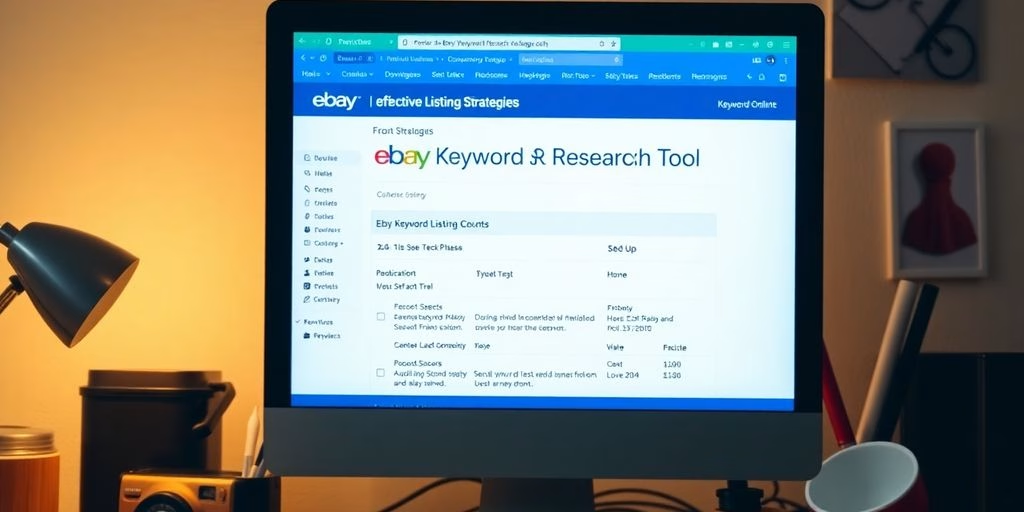Mastering the art of customer analysis is pivotal for growth and success. This article delves into the essential strategies that can help businesses decode customer desires, gain a competitive edge, leverage digital analytics, excel in B2B sales, and enchant customers for lasting loyalty. By understanding and implementing these key approaches, businesses can position themselves to thrive in an ever-evolving market.
Table of Contents
ToggleKey Takeaways on Customer Analysis
- Gaining deep customer insight is foundational to identifying and fulfilling customer needs, thus driving business growth.
- Competitive analysis is key to uncovering market opportunities and developing strategies to highlight your unique advantages.
- Utilizing data-driven marketing analytics is essential for predicting trends and customizing strategies for optimal impact.
- In B2B sales, a thorough understanding of the complex landscape and tailored sales techniques are crucial for success.
- CRM systems are vital for enhancing customer relationships, personalizing experiences, and nurturing leads for increased loyalty.
Decoding Customer Desires: The Heart of Market Conquest

Audience Identification: Crafting a Customer Avatar
Embarking on the quest to conquer the market begins with a map and compass: your customer avatar. This mythical creature is not just a figment of imagination but a detailed profile that represents your ideal customer. Crafting this avatar involves a deep dive into the psyche of your target market, distilling their desires, fears, and aspirations into a persona that guides your marketing strategy.
To truly speak to your target market, you must first understand them. The Customer Avatar Exercise is a rite of passage for any marketer, involving steps such as surveying customer data, evaluating information from registration forms, and giving your avatar a name that embodies their essence. Here’s a distilled version of the process:
- Create a detailed profile of your ideal customer.
- Gather and analyze data from surveys and forms.
- Assign a relatable name to your customer avatar.
In the realm of customer analysis, neglecting the creation of a customer avatar is akin to setting sail without a compass. It’s the beacon that illuminates the path to your audience’s heart and wallet.
Remember, the customer avatar is not static; it evolves as you gather more data and insights. It’s a living blueprint that adapts to the shifting sands of the market.
Pain Point Alchemy: Turning Customer Analysis Challenges into Opportunities
In the alchemical tradition of business, transforming customer pain points into golden opportunities is an essential skill. Listen closely to the whispers of discontent, and you’ll find a treasure trove of insights. By analyzing customer feedback, including reviews and social media commentary, you can distill the essence of their frustrations.
- Dive into support tickets
- Engage in direct conversations
- Observe customer behavior
These methods are your crucible, where you can transmute dissatisfaction into actionable strategies. A keen eye on the competition can also reveal how others are addressing similar issues, providing a valuable benchmark.
By customizing your approach and highlighting the specific benefits that align with their goals, you create a compelling narrative that resonates with your audience.
When you tailor solutions to meet unique challenges and offer a remedy designed specifically for your customers, you not only solve their problems but also carve out a niche in the market. This strategic focus secures a competitive advantage that is difficult for rivals to match.
Solution Symphony: Harmonizing Product Benefits with Customer Needs
In the grand orchestra of business, your product’s features are the instruments, but the music that truly captivates the audience is the benefit they derive. Craft compelling value propositions that align with customer desires, tailor to your audience, and deliver on promises. This is the essence of creating a memorable brand experience.
- Benefit Translation: Transform features into tangible benefits that resonate with your customers’ needs.
- USP Development: Forge a Unique Selling Proposition to stand out in the marketplace.
- Narrative Integration: Weave your assets and benefits into a story that captivates and sells.
- Position Testing: Validate and refine your market position based on feedback.
- Team Alignment: Ensure your positioning mantra is embodied by your entire team.
Experiential merchandising and strategic digital marketing tactics are your market maneuvers, focusing on maximizing ROI and aligning efforts with business goals. Lifecycle ROI is the art of optimizing the product journey for maximum returns, ensuring every note played contributes to the symphony of success.
The Competitive Edge: Sharpening Your Customer Analysis Sword

Market Gap Analysis: Finding Your Competitive Advantage
In the quest to brandish your business’s unique value, conducting a gap analysis is akin to uncovering treasure on a pirate’s map. It’s about pinpointing where X marks the spot in a sea of sameness. By exploring effective tools and techniques for market research gap analysis, you can bridge the disparities, enhance offerings, and stay ahead in your industry.
To truly stand out, it’s not enough to just know your enemy; you must know the battlefield. This means understanding the terrain of customer needs, competitor offerings, and market trends.
Armed with tools like Ahrefs, SEMrush, Google Trends, SERP Checker, and Keyword Difficulty Checker, you can embark on a reconnaissance mission to gather intelligence on the keywords that draw customers to your rivals. Here’s a strategic approach to leveraging your findings:
- Identify the core of your target audience to tailor your messaging.
- Understand where your competitors fall short, carving a niche for your product.
- List your unique features and strengths to leverage them in your market narrative.
- Translate features into tangible benefits that resonate with your customers’ needs.
Remember, the goal is not just to match your competitors, but to surpass them. By focusing on customer adoption and success, you can differentiate your business and wield a competitive advantage in markets where products are similar.
Competitor Reconnaissance: Learning from the Market’s Movers and Shakers
In the grand chessboard of business, understanding your adversaries is as crucial as knowing your own moves. Competitor analysis is not just about keeping tabs on other players; it’s about uncovering their strategies and adapting your own game plan accordingly. By analyzing your competitors’ strengths and weaknesses, you can position your product or service as the superior choice.
- Identify Market Trends: Spot emerging trends to stay proactive.
- Audience Identification: Tailor messaging to the core target audience.
- Market Gap Analysis: Find where competitors fall short.
- Asset Cataloging: Leverage unique features in your narrative.
- Benefit Translation: Turn features into tangible customer benefits.
In the quest for market dominance, agility and innovation are your best allies. Keep refining your product, offer unmatched customer service, and deploy creative marketing strategies to not just meet, but exceed customer expectations and outshine the competition.
Strengths and Weaknesses: Building Your Strategic Arsenal
Knowing your strengths and weaknesses is akin to having the high ground. Boldly capitalize on your strengths to dominate the battlefield, while shrewdly shielding your vulnerabilities from the enemy’s gaze. Here’s how to fortify your strategic arsenal:
- Asset Cataloging: List your unique features and strengths to leverage them in your market narrative.
- Benefit Translation: Translate features into tangible benefits that resonate with your customers’ needs.
- Competitor Reconnaissance: Understand your rivals’ weaknesses to turn the tide in your favor.
In the art of market conquest, your strategic arsenal is your best defense and your sharpest attack.
Remember, the goal is not just to compete, but to outmaneuver. By conducting a thorough analysis of your own offerings and the competitive landscape, you can craft a compelling value proposition that is hard to ignore. The Guide to winning Position Zero in SEO is a testament to the power of precision and relevance in today’s digital arena.
Transforming Data into Gold

The Data Crucible: Melting Down Numbers for Customer Analysis
In the alchemical labs of modern business, the Data Crucible is where raw numbers transmute into actionable insights. Boldly navigating through the sea of data, savvy marketers harness the power of data-driven marketing tools to distill complex information into strategies that spark growth and innovation.
To master this transformative process, one must acquire a set of skills and utilize specific tools:
- Principles of data visualization
- Communication strategies for complex data
- Designing impactful charts and graphs
- Storytelling with data
- Utilizing feedback for visualization improvement
With these skills, businesses can effectively communicate complex data, ensuring that stakeholders grasp the narrative woven through the numbers.
Performance Measurement & ROI Analysis stands as a cornerstone in this crucible, crucial for businesses to measure the effectiveness of their strategies and make data-driven decisions. It’s not just about looking at the numbers; it’s about understanding the story they tell and how it affects your business trajectory.
Customer Analysis Mastery: Predicting Trends and Tailoring Tactics
Core of customer anlysis lies in the ability to foresee market currents and tailor strategies accordingly. Predictive analytics is the crystal ball that reveals patterns and propels businesses ahead of the curve. By harnessing the power of data, marketers can craft campaigns that resonate with the audience’s evolving desires.
Proficiency in data analysis tools is not just a skill but a weapon in the marketer’s arsenal. It allows for the identification of KPIs and metrics that align with business objectives, ensuring that every move is a calculated step towards victory. Here’s a quick spellbook of skills to master:
- Statistical analysis and inference
- Predictive modeling and forecasting
- Data mining and pattern recognition
- Optimization techniques
- Decision analysis and support
Embrace new technologies and target audience preferences to weave enchanting marketing tales that captivate and convert. Personalization is the potion that turns prospects into patrons, and automation is the wand that ensures your message hits the mark every time.
KPIs and Metrics: Measuring Customer Analysis Success
In the digital marketplace, KPIs and metrics are the compasses that guide businesses to treasure troves of success. They are not just numbers; they are the narratives of your company’s journey, telling you where you’ve been, where you stand, and what direction to take next.
To navigate this KPI jungle effectively, one must choose quality over quantity. Align your KPIs with your business goals, monitor them regularly, and make data-driven decisions to cut through the metrics maze. Here’s a distilled list of steps to ensure your KPIs are working for you:
- Identify KPIs that align with your strategic objectives
- Regularly track and analyze these KPIs for performance insights
- Use the insights to optimize and adjust your strategies
Mastery of KPIs relevant to digital marketing is not just about tracking numbers—it’s about interpreting data to derive actionable insights that propel your business forward.
Remember, while KPIs can illuminate the path to success, they are only as powerful as the actions they inspire. So, wield them wisely to carve out your market niche and elevate your digital presence.
B2B Customer Analysis: Mastering the Art of B2B Sales

Navigating the B2B Maze: Strategies for Complex Sales Landscapes
Imagine the realm of B2B sales as a labyrinthine forest, each pathway a conduit to potential alliances. Understanding our customer analysis is key to unlock the paths. The sales guide, armed with a map of offerings, must traverse this network with finesse, forging trust and showcasing market acumen to lead clients to success. The journey is arduous but rewarding, demanding not only communication prowess but also a deep understanding of the market landscape.
To master this terrain, consider these pivotal strategies:
- Build a foundation of trust: Establish credibility through knowledge and reliability.
- Tailor your approach: Customize pitches to resonate with the unique needs of each business.
- Stay informed: Keep abreast of industry trends to advise and adapt effectively.
In the B2B domain, success hinges on the ability to evolve with the market, integrating cutting-edge trends like AI, IoT, and cybersecurity into your strategy.
Revolutionizing your approach with tools such as Leads API for pinpointed lead generation and HubSpot for comprehensive marketing solutions can give you the competitive edge. Embrace the continuous evolution of B2B sales, where adaptability and strategic foresight pave the way to enduring partnerships and growth.
Research and Recon: B2B Customer Analysis Intel
In the chess game of B2B sales, research is the queen that protects and empowers your every move. It’s the meticulous gathering of intelligence that illuminates the path to victory. By diving into market research, you can uncover the strategic insights that will guide your approach to each unique customer.
- Understand the industry landscape
- Identify customer pain points
- Tailor your sales pitch
Armed with a deep understanding of your target audience and the competitive environment, you can craft a sales strategy that resonates on a personal level, turning prospects into partners.
The future of B2B ecommerce hinges on a customer-centric approach, integrating innovations like the IoT, and leveraging technology for predictive analytics. Sustainability isn’t just a buzzword; it’s a core strategy for growth and market leadership. By aligning your sales tactics with these evolving trends, you’re not just selling a product or service; you’re offering a vision of the future.
Sales Technique Tapestry: Weaving Persuasion into Conversations
In the intricate dance of B2B sales, the steps you take are as crucial as the rhythm you set. Personalization and storytelling are the twin threads that, when woven into your sales tapestry, can create a compelling picture for your prospects. Tailoring your pitch to address the unique needs and pain points of each prospect not only shows your dedication but also sets the stage for a narrative that resonates on a personal level.
By crafting a narrative that aligns with your prospect’s ambitions and challenges, you create a persuasive backdrop against which your product’s benefits shine brightest.
Leveraging real-life success stories and testimonials adds a layer of credibility and emotional appeal to your pitch. Here’s a simple list to ensure your stories hit the mark:
- Relate to your prospect’s industry or specific challenges.
- Highlight the transformation journey of past clients.
- Emphasize the measurable outcomes achieved.
- Use testimonials to add authenticity and trust.
Remember, the art of convincing lies not in the grandeur of your words, but in the relevance and relatability of the stories you tell. As you master these techniques, you’ll find that your sales conversations become less about selling and more about guiding your prospects to their desired future state.
Customer Analysis and CRM: Enchanting Customers for Lasting Loyalty

The CRM Grimoire: Spells for Streamlining Communication
In the realm of customer enchantment, the CRM grimoire is your most trusted tome. It’s not just about managing data; it’s about weaving a tapestry of interaction that keeps customers spellbound. CRM systems are the wizards’ staffs, channeling your communication efforts into powerful customer connections. With the right incantations, these systems transform customer data into personalized experiences that resonate on a deeper level.
- Utilizing CRM software to manage customer data, interactions, and relationships effectively
- Segmentation and targeting techniques to deliver personalized experiences and targeted marketing campaigns
- Lead management processes to nurture leads and maximize conversion opportunities
- Reporting and analytics within CRM systems to track engagement and refine strategies
Mastery of CRM tools is not just beneficial; it’s a critical component in the alchemy of business growth. By harnessing the power of CRM, businesses can ensure that every customer interaction is not just a touchpoint, but a stepping stone to lasting loyalty.
Customer Analysis and Personalization: Brewing Up Tailored Customer Experiences
In the realm of customer enchantment, personalization is the secret ingredient that transforms the mundane into the magical. It’s not just about sprinkling their name across emails; it’s about concocting a potion that resonates with their deepest desires and needs. Personalization and continuous testing are key for CTA success, ensuring that every touchpoint is optimized for maximum engagement.
- Understand the customer’s unique challenges and goals.
- Craft a message that aligns with their industry trends or company news.
- Offer reward customization, allowing them to choose incentives that entice.
By weaving personalization into the fabric of your customer interactions, you create experiences that are not only memorable but also incredibly effective.
Harnessing the power of data analytics is crucial. Segment your audience and deliver targeted incentives that strike a chord with their individual preferences. Remember, often, to create a memorable service, you don’t have to collect all the customer data online, but to be there with them, talk to them, listen to them, and understand their world.
Lead Nurturing Customer Analysis: Reviving Interest and Cultivating Commitment
In the realm of customer relationship management, lead nurturing is akin to a delicate dance with potential clients, guiding them through the stages of acquaintance to engagement. It’s a strategic sorcery that transforms lukewarm leads into fervent followers.
- Stoking Product Interest: Engagement is the spark that ignites curiosity. Utilizing tools like SurveySparrow’s interactive formats can fan the flames of interest, keeping prospects captivated.
- Illuminating the Path: A clear value proposition acts as a beacon, guiding customers towards commitment.
- Keeping the Relationship Alive: Continual effort and exceeding expectations are the keystones of lasting relationships.
- Retention and Advocacy: Post-purchase satisfaction is the groundwork for loyalty and advocacy, ensuring a cycle of repeat business.
Subtly encouraging visitors to take action is the essence of lead nurturing necromancy. It’s not just about attracting prospects but also about shaping them into brand champions.
Revolutionary lead nurturing techniques are the lifeblood of a thriving business, turning cold leads into hot opportunities. By hunting for leads and nurturing each one, businesses can cast a spell of growth and secure their place in the competitive marketplace.
Dive into the magical realm of CRM Wizardry and transform your customer interactions into enchanting experiences that foster lasting loyalty. Visit our website to learn how our innovative strategies can help you captivate your audience and keep them coming back for more. Don’t miss the opportunity to elevate your business with a touch of enchantment. Click here to start your journey towards customer enchantment and loyalty!
Conclusion
As we draw the curtains on customer analysis, let’s not forget that the crescendo of business growth is achieved through a harmonious blend of understanding and action. Like a maestro conducting an orchestra, you must synchronize the instruments of customer insight, competitive analysis, and data-driven decision-making to create a symphony that resonates with the market. Whether you’re a startup virtuoso or an e-commerce maestro, remember that the encore is earned through relentless refinement of your strategies and a commitment to CRM excellence. So, keep your audience captivated, your performance pitch-perfect, and your business crescendoing towards an ovation-worthy growth!
FAQs
How can customer analysis insight improve my business strategy?
Customer insight provides valuable knowledge about your existing customers’ needs, pain points, and how your products or services provide solutions. By understanding this, you can identify potential customers with similar needs and tailor your business strategy to better meet market demands.
Why is competitive analysis important for my business?
Competitive analysis helps you identify your competitors and understand their strengths and weaknesses. This information can reveal opportunities and threats, enabling you to develop strategies that leverage your strengths and mitigate risks, thus giving you a competitive edge.
What role does customer analysis data play in crafting marketing strategies?
In the digital age, customer analysis data is crucial for shaping marketing strategies. It allows businesses to analyze and interpret marketing trends, optimize campaigns, and make informed decisions that drive sustainable growth.
How can CRM systems enhance customer analysis and relationships?
CRM systems streamline communication, personalize interactions, and nurture leads throughout the customer journey. This leads to stronger customer relationships, increased loyalty, retention, and ultimately, business growth.
What customer analysis skills are necessary for effective B2B sales?
Effective B2B sales require advanced research, competitive analysis, crafting persuasive sales techniques, and a deep understanding of complex sales landscapes to successfully navigate and close deals.
How can I measure the success of my digital marketing efforts?
Success in digital marketing can be measured using Key Performance Indicators (KPIs) and metrics that are relevant to your business objectives. Proficiency in data analysis and visualization helps communicate insights and track progress effectively.









































































































